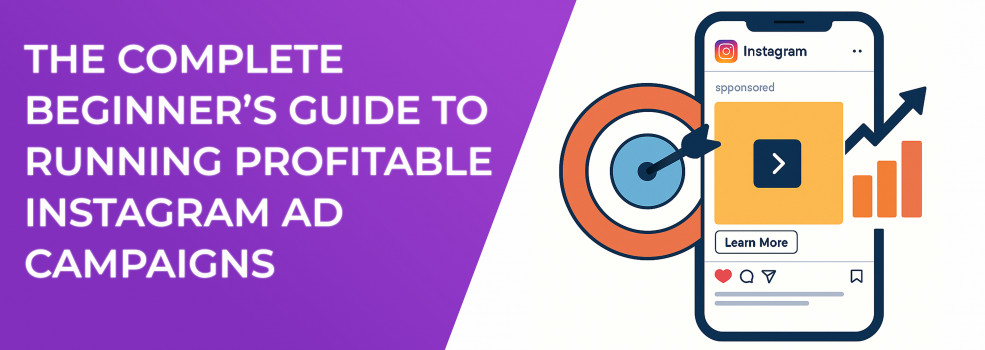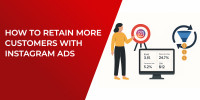Instagram remains a powerhouse for visual discovery. Whether you sell eco-friendly water bottles or enterprise dashboards, your next customer is probably already scrolling through Stories and Reels. Recent studies report an average conversion rate for Instagram ads between 0.9% and 1.6%, yet brands that embrace Facebook ad optimization and the newest Facebook ads tips routinely double those figures.
Before moving on, picture what even a one-point uplift means for revenue. A single percentage-point bump on a thousand-dollar product line can fund months of creative testing.
Get the Plumbing Right First
Solid foundations make optimisation possible. Think of these tasks as installing the wiring before you flip the lights on:
-
Create a Facebook Pixel and add it to every page that can lead to revenue. WordPress users can do this in minutes with the Facebook Pixel WordPress plugin.
-
Verify your domain now so attribution doesn’t break mid-campaign.
-
Activate Facebook retargeting audiences immediately, even if you wait to advertise, because historical data shortens the learning phase and fuels future Facebook ads optimization.
To make implementation painless, follow our step-by-step tutorial on setting up Facebook Retargeting; you’ll have warm audiences collecting data in less than an hour.
With the basics in place, you can finally trust your numbers and focus on improving the conversion rate for Instagram ads rather than guessing what happened.
Pick the Perfect Objective and Stick to It
Objectives guide the algorithm, so choose deliberately. Many first-time advertisers smash the Conversions button on day one, then wonder why nothing happens. A smarter approach starts higher in the funnel and graduates downward.
Ask yourself, How warm is my audience right now? Targeting strangers with a conversion objective is like proposing marriage on the first date.
Unsure which goal fits your funnel stage? Our detailed breakdown, Meta Ad Campaign Objectives Explained, walks through every option with real-world examples.
When you follow this progression, the question shifts from what is a good conversion rate for Instagram? to how far can I push mine?
Audience Targeting 101
Great creative dies when shown to the wrong people. A tight audience cuts waste and boosts relevance. Remember: targeting is as much about exclusions as inclusions.
If you’re new to interest, demographic and behaviour filters, start with Facebook Ad Targeting 101 to nail the basics before layering advanced segments.
-
Layer interest and behaviour targeting with demographic filters for precision.
-
Show 15-second Reels to site visitors who bounced; that’s classic Facebook retargeting.
-
Clone your best customers with a 1% look-alike of purchasers seed.
-
Exclude recent buyers unless you sell a subscription, protecting budget and keeping your typical conversion rate for Instagram ads high.
Stacking these tactics transforms vague reach into high-intent traffic.
Budget and Bid Strategies That Don’t Burn Cash
Money management beats flashy design every time. Define your acceptable cost-per-result before moving a single slider. Without that ceiling, every bid feels random.
Meta’s Advantage Campaign Budget tool reallocates spend in real time. If Ads Manager warns that an “Ad Set May Get Zero” after a budget tweak, consult our troubleshooting guide, Why You See “Ad Set May Get Zero” on Facebook and How to Fix It.
Pair it with two simple guardrails:
-
Pause any ad set with a CTR below 0.5% after $20 spent.
-
Double the budget only after two consecutive days of costs 20% under target.
This baby-step approach to Facebook ads optimization typically trims wasted spend by about 30 % in the first month.
Creative That Stops the Scroll
Your ad has milliseconds to win a thumb’s pause. Treat each asset like a book cover shouting “Pick me!” from a crowded shelf.
-
Hook viewers in the first second with motion, bright contrast, or a smiling face. Short vertical clips work best—see our playbook on How to Use Instagram Reels in Your Marketing Strategy for shot-list ideas.
-
Demonstrate the product solving a real-world pain point; customers buy outcomes, not pixels.
-
Add captions — Reels default to mute.
-
Burn the call-to-action into the creative instead of relying solely on the Shop Now button.
Winning creatives hook attention fast and match the format users love.
Publish the creative organically first. If followers ignore it, fix the hook before paying for impressions.
Scheduling and Placements
Timetables matter less than people assume because Meta serves ads when each user is active. Start broad, then refine.
Run Advantage+ placements across Feed, Stories, Reels, and Explore for seven days. Next, open Breakdown → Placement. Turn off the worst-performing 10% and keep the rest. This quiet pruning shields budget without straitjacketing the algorithm.
Measure, Optimize, Repeat
Analytics can feel intimidating, so turn it into a weekly ritual. Brew coffee, open Reports, and answer three questions:
-
How did my average conversion rate for Instagram ads move week over week?
-
Which placements deliver results below my cost target?
-
Which creative fatigued? Pause and replace it.
Spotting fatigue early saves budget; dive deeper with Ad Fatigue on Facebook: How to Spot It Early and Fix It Fast.
Track performance weekly to spot trends, test ideas, and optimize spend.
Track trends weekly — daily fluctuations mislead small accounts. Always tag links with UTMs so you can reconcile Meta data with Google Analytics and see the full journey.
Scaling Profitably
Scaling isn’t about doubling spend overnight; it’s about protecting cost-per-result while increasing volume. Choose the path that fits your creative pipeline and risk tolerance:
-
Horizontal scaling: duplicate winning ad sets, tweak interest stacks, or swap creative angles.
-
Vertical scaling: raise budget by 20% every 48 h if ROAS holds steady.
-
Feed a continuous purchase stream back into look-alike seeds. This “pixel loop” refreshes targeting and keeps your Facebook advertising analytics sharp.
Stick with this playbook and soon you’ll write your own benchmarks for good conversion rates on Instagram.
Common Beginner Pitfalls
Even seasoned pros slip up; they just recover faster. Watch out for these traps:
-
One broad audience, one ad, one hope — always test at least two creatives.
-
Turning campaigns off too soon — allow three to five days for the learning phase.
-
Ignoring comments and DMs — social proof lifts click-through rates.
-
No post-purchase nurture — happy buyers cost less to convert next time.
Audit your campaigns tonight for every item on this list.
Your Next Steps
You now hold a full-funnel roadmap. The final hurdle is action. Start small, build momentum, and refine relentlessly.
-
Audit your Facebook Pixel installation and confirm events fire correctly.
-
Draft three creative hooks—one image, one carousel, one short video—and storyboard each.
-
Launch a $10-per-day test using the objective and targeting framework above.
-
Review performance after seven days and adjust budgets or audiences with the checklist from section 8.
Master the fundamentals, stay curious, and keep refining your Facebook advertising best practices. Profit follows practice, and every data-driven tweak nudges your Instagram ads conversion rate higher.

